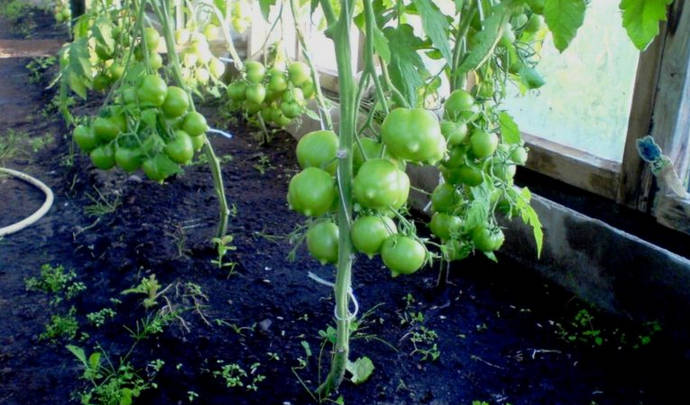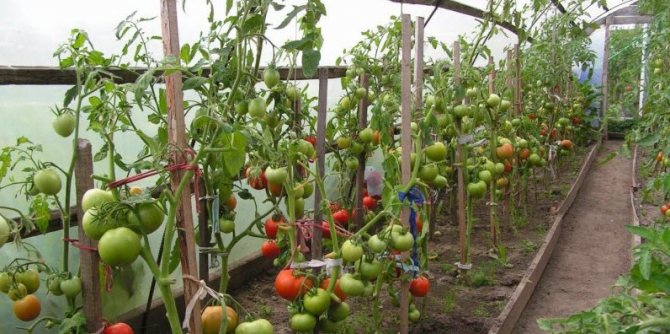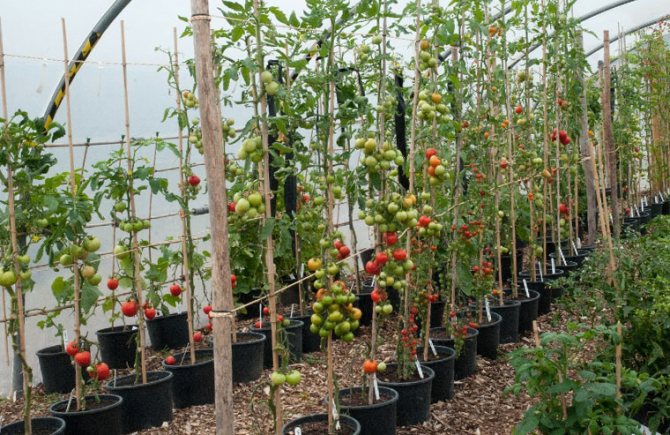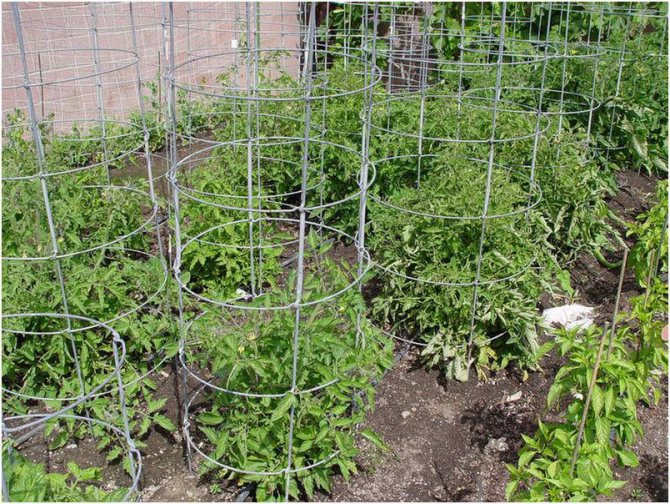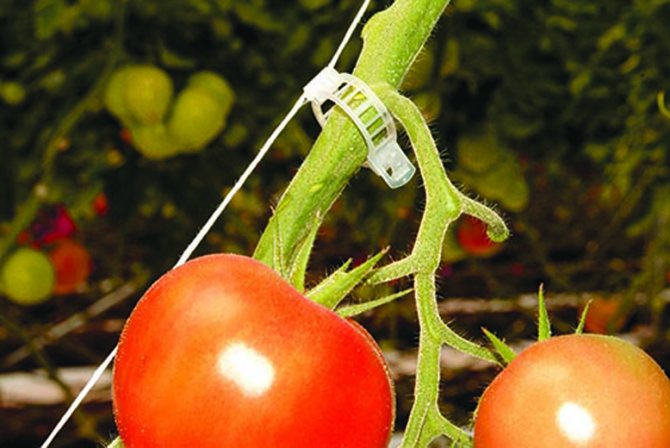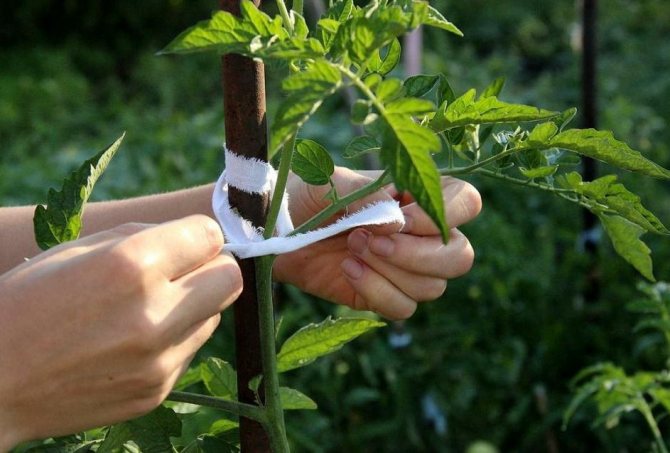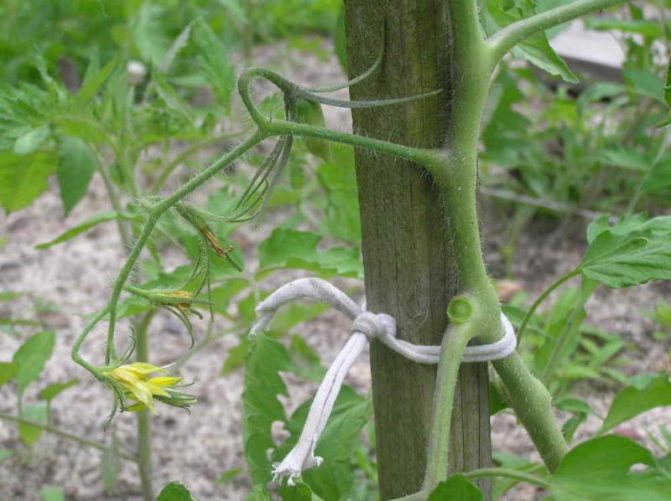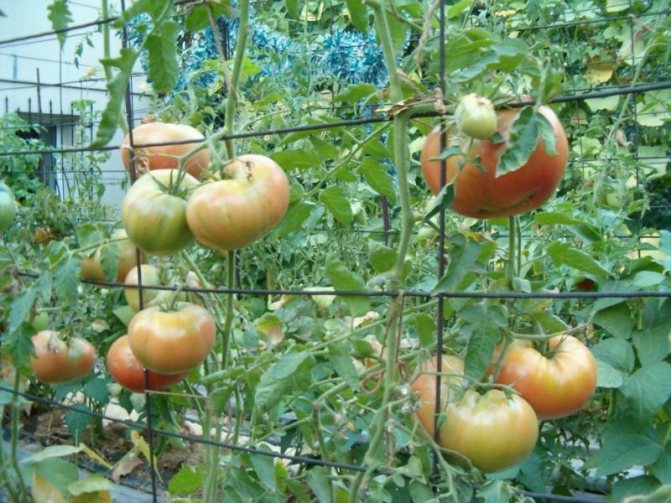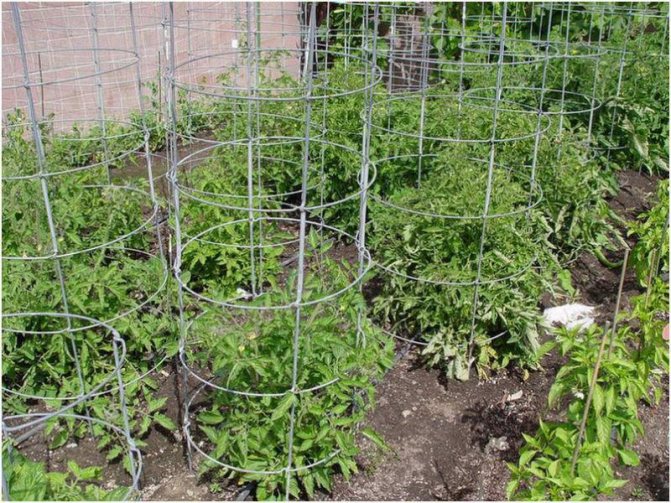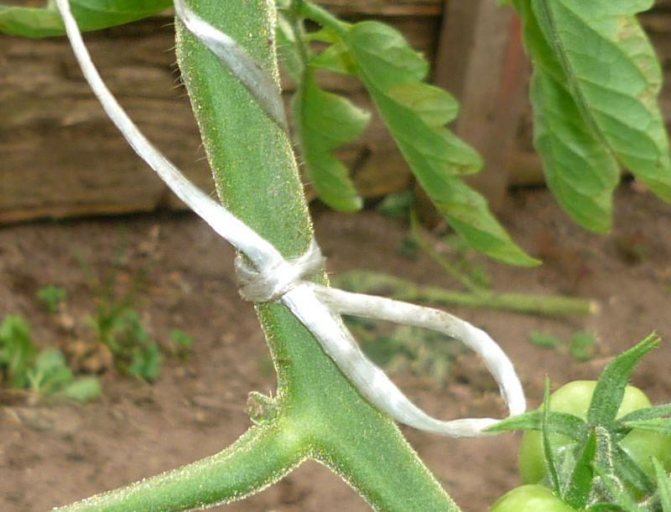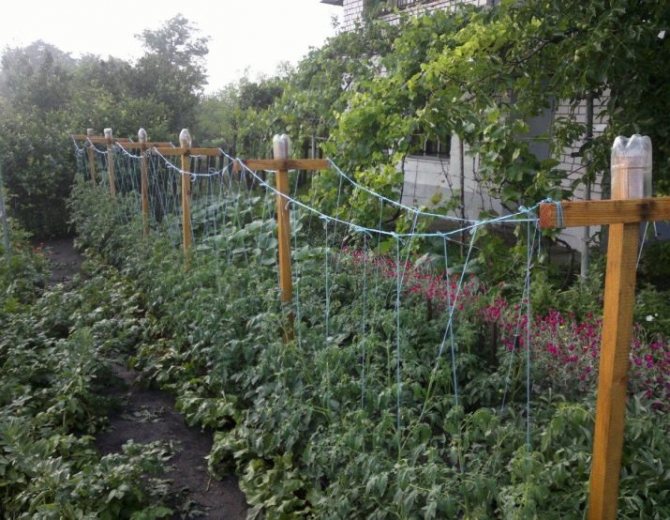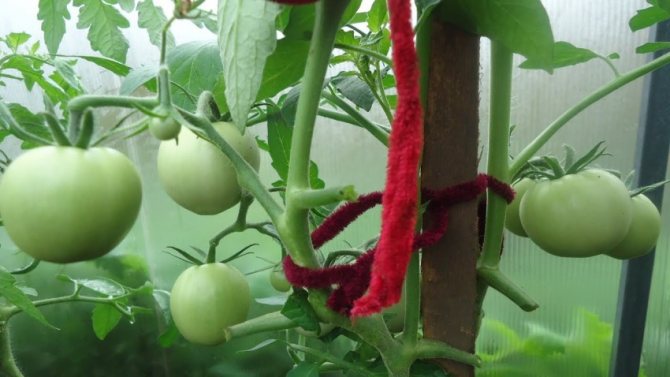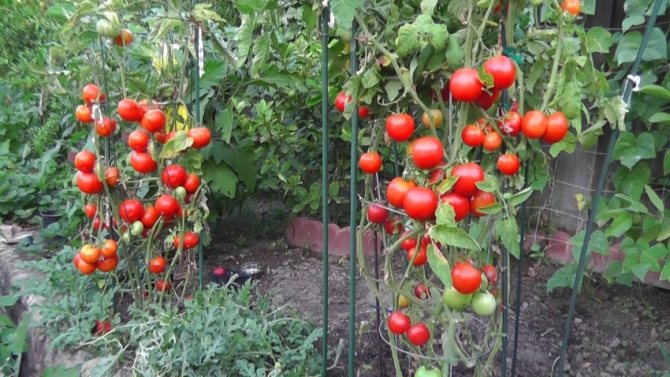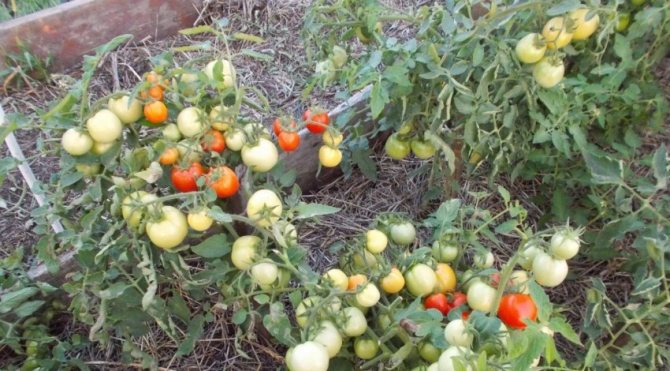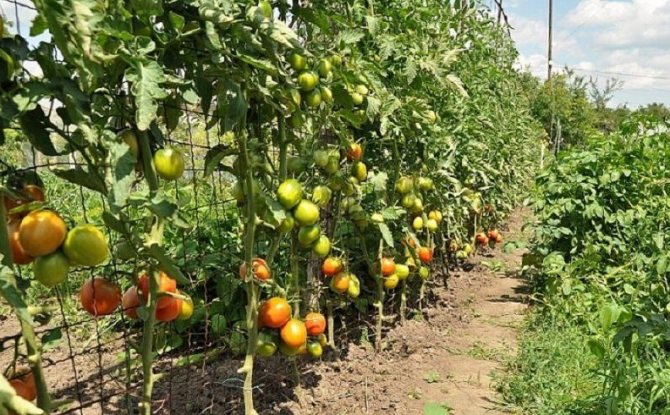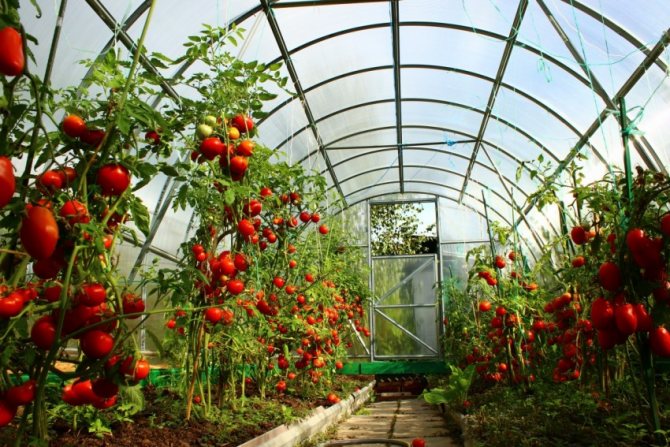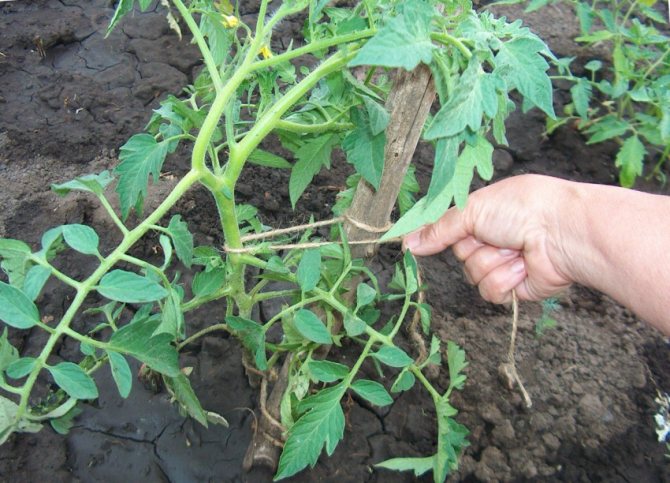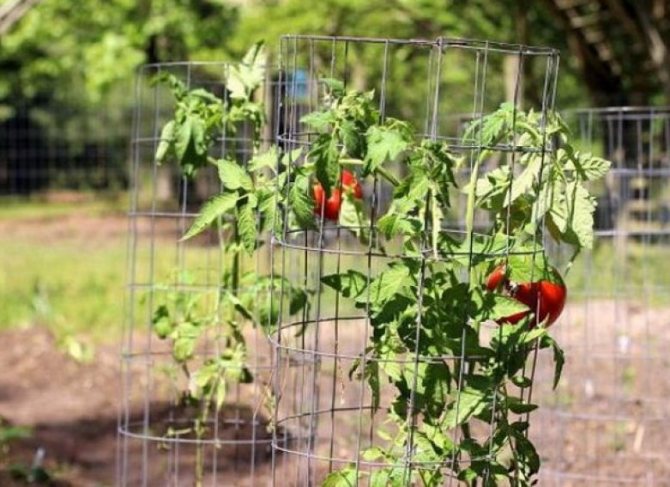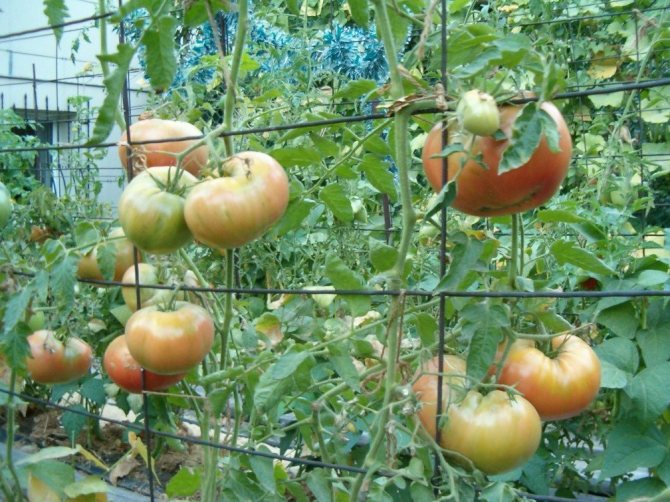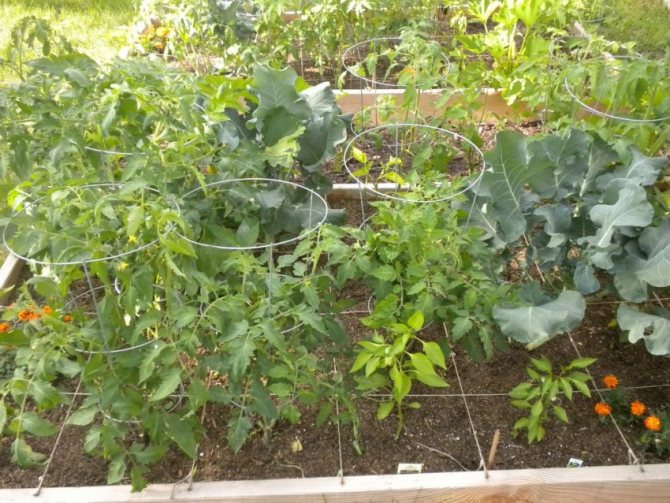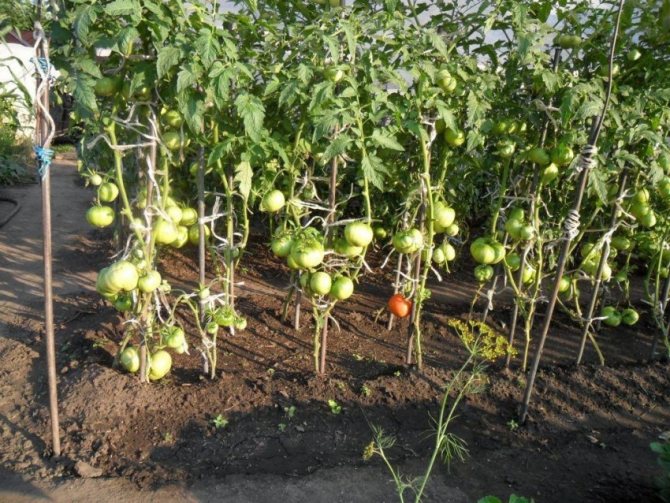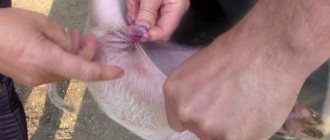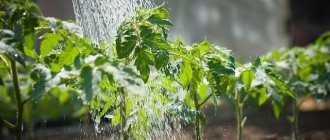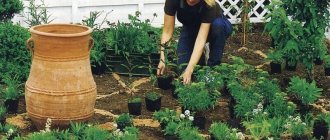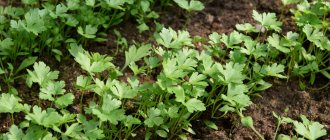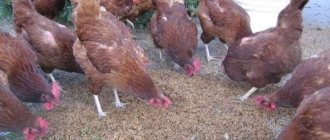Why tie up tomatoes?
Experienced gardeners, who have been growing tomatoes for several years, know that a garter is an important event, on which the quantity and quality of the crop directly depends. The garter is especially important for medium-sized and tall varieties - several kilograms of fruit grow on their bushes, under the weight of which the bushes break and die.
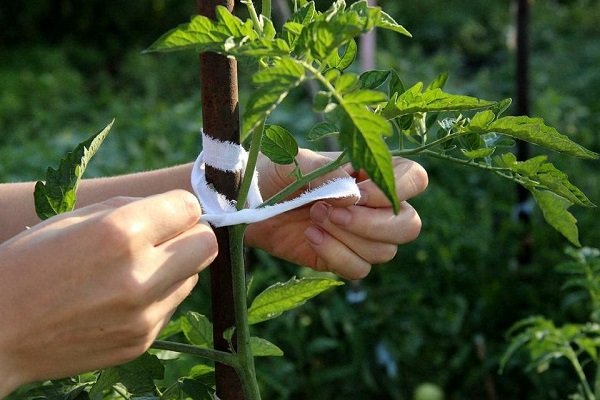
Why do you need to tie up tomatoes:
- unloading the stem and branches - part of the weight of the fruit is transferred to the supports;
- protection of fruits from slugs;
- protection against diseases that are transmitted to plants by close contact with the ground;
- prevention of damage to fruits due to fungal infection;
- more sun penetrates to the fruits, they ripen faster;
- convenient to pick ripening fruits.
Useful Tips
For a more accurate and thorough tying of tomato bushes, you can follow simple rules that will help avoid unnecessary injuries and deformations of the plant:
- It is not recommended to fix the stem with a figure-of-eight knot, as you risk pulling it too tightly.
- The method of tying to an individual support is more suitable for medium-sized bushes, and for tall varieties, trellis is best suited.
- To avoid fruit rotting, do not let them come into contact with the ground.
- The garter should be carried out only when you notice that the plant is slightly askew and slopes towards the ground. Do not over-distort the stem.
- Many gardeners combine different tying methods. For example, near the root of the plant, you can hammer in a peg and fix the main part of the stem on it, and tie the upper part to the trellis.
- Do not be lazy to make a heavy and complex structure for support, because the stronger it is, the easier and more reliable the growing process will be.
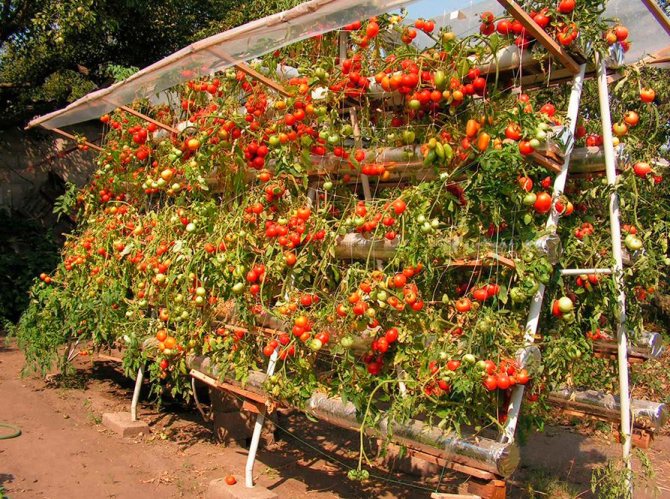

The importance of the tying procedure is difficult to question - it is one hundred percent protection of fruits and plants from damage and a guarantee of a high-quality and high yield. The most important thing is to choose in advance the most suitable method of garter and timely change the fixation as the plant grows.
Tomato garter rules
There are several ways to tie tomatoes, differing in the materials and devices used. The event in any way is carried out according to the same rules.
Rules for garter tomato bushes:
- The timing of the event must be respected. It is necessary to choose the moment in time to avoid overloading the bushes.
- Supports or frames are installed in moist soil. This prevents cracking of the soil, which can damage the fine roots.
- The garter is carried out in stages: first, the central stem is tied, and as soon as the fruits begin to form, the fruiting branches are tied up.
- A separate rule for tall varieties is that they must be tied up within 4-6 days after transplanting the seedlings into the ground.
- Low-growing varieties are tied up after the appearance of the first ovaries.
- The garter is free, it should not overtighten the stem.
- The loop with which the bush is attached to the support is made in the form of number 8.
- Tall bushes are fastened first under the lower brush, and as they grow, they make several more fasteners.
- Low-growing bushes are fixed in the middle of the stem.
- Garter materials are used once, at the end of the season they are collected and disposed of.
- Before the garter, the bushes are stepson. Stepsons are lateral shoots growing in the leaf axils. They reduce the intensity of fruiting, therefore they must be removed (pinned).
- When tying up the bushes, it is necessary to leave free space between them and the supports, counting on further growth.
- The number of garters depends on the variety and can be 2 to 4 times.
Further care
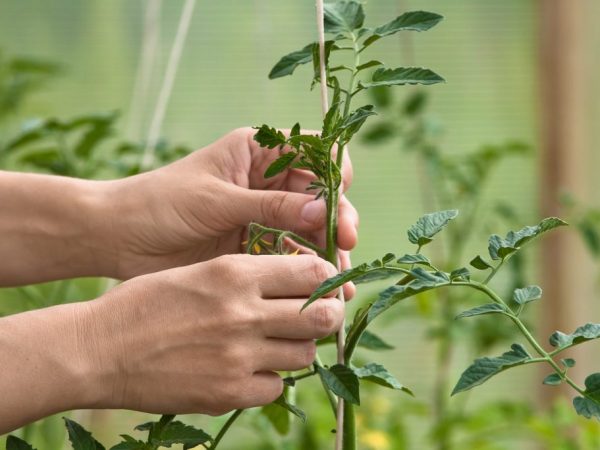

After tying up the plants, water should be
Tied tomatoes should be watered immediately after the procedure. Further care is not much different from the classic one.
Microclimate
Creating a favorable climate in a polycarbonate greenhouse involves:
- temperature regime at the level of 25 - 28 ° С during the day and not lower than 18 ° С at night;
- the humidity level is not more than 55%, for which airing is regularly arranged;
- tied bushes are watered by the root method, if possible, drip irrigation is installed;
- in the hot season, watering is carried out at intervals of 2-3 days, and when vegetables are ripening - once every 6-7 days;
- after moistening, the soil is loosened, creating freedom for oxygen to penetrate the ground.
Stepping
Tomatoes in the greenhouse require pinching. Ignoring this procedure weakens the plant, negatively affecting the yield.
Wherein:
- a tall bush is usually formed into 1 stem, removing all lateral shoots and pinching the central crown as soon as the 7th fruiting brush is formed;
- for medium-sized varieties, 2-3 stems are often left.
Stepsons break out by hand, tk. a mechanical procedure, in contrast to pruning with a garden tool, is less traumatic for the plant.
Pollination
Greenhouse conditions create obstacles to the natural pollination of tomato bushes, therefore, when growing tomatoes in a closed structure, it is recommended to open transoms more often at the flowering stage and create drafts leading to the movement of pollen through the greenhouse along with wind currents.
To attract pollinating insects to the greenhouse, honey plants that attract them are planted.
It is permissible to carry out additional pollination by hand, shaking the flower-bearing brushes, collecting and applying pollen with a toothbrush or cotton swab.
Top dressing
Tomatoes are fed with potassium and phosphorus, giving preference to foliar spraying. At the fruiting stage, fertilizers (chicken droppings, superphosphate) are best applied at the root.
():
Foliar dressing is an "ambulance" for plants suffering from an acute deficiency of any trace element. It is not possible to give a lot of nutrition "on the sheet" - a high concentration can cause burns. Therefore, the main application is root nutrition. At the fruiting stage, fertilizing is carried out with phosphorus and potash fertilizers.
Treatment against diseases and pests
Tomatoes growing in a greenhouse are less attacked by pests, and their tying allows free circulation of air currents, preventing the appearance of rot and other infections. But all the same, it is not worth neglecting treatments for insects and diseases. It is only necessary to cut their number by half.
For treatments, you should also not use concentrated products, without which you cannot cope with growing tomatoes in an open garden.
For healthy greenhouse tomatoes, prophylactic treatments with folk remedies (for example, garlic infusions) or biological preparations (for example, phytosporin) are often sufficient.
Materials and fixtures
When tying tomatoes, it is important not only to observe the process technology, but also to choose the right materials with which the bushes will be supported in the air.
Tips for choosing garter material:
- It is forbidden to use wire, thin twine and fishing line as a garter.All this bites into the stems of the bushes, damaging and deforming them. We need materials with a width of 4-5 cm.
- It is forbidden to use last year's garter. Pathogens of various diseases can remain on it, which there is no need to transmit to new plants.
- Natural fabrics cannot be used. They tend to rot, insects, fungi, bacteria grow in them.
- The best option is a synthetic material with a low stiffness coefficient: nylon cord;
- twine;
- wide and thick rope;
- old nylon stockings.
Before use, the garter material must be disinfected - washed and boiled.
Along with the garter materials, you will need supporting devices to which the bushes are tied to plastic and metal structures. It can be:
- stakes;
- mesh;
- frameworks.
Vertical trellis
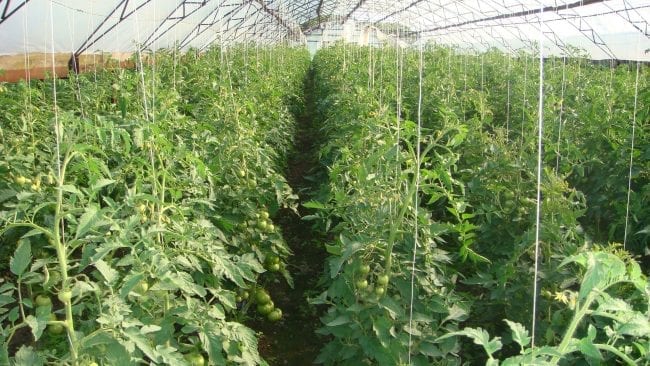

Tying tomatoes vertically
This method is suitable for tall greenhouse varieties:
- Use ready-made trellis made of wood, plastic. Place structures near each bush, fixing them to the ceiling of the greenhouse.
- Tie tomatoes to each tool. As they grow, "pull" the plants and tie them up again.
- Instead of ready-made trellises, you can use ropes that are pulled from the ground to the ceiling of the greenhouse parallel to each other. Place them correctly at a distance of 30-35 cm.
Timing
The garter begins when 8-10 true leaves appear, and the stem in its lower part reaches a diameter of 1 cm. The timing of tying depends on the early maturity of the varieties.
The timing of the first garter, depending on the group of early maturity:
- early - 35-40 days after landing in the ground;
- medium - 50-60 days;
- late - 70-80 days.
The number of subsequent garters will depend on how large the bush is, how quickly and vigorously it will grow. If the bush is short and compact, one garter may be enough, and some varieties do without it at all.
Tying tomatoes in the open field
In the open field, large growers and many simple gardeners are trying to grow tomato varieties that can grow without a garter. They are also called superdeterminant or restricted growth varieties. The disadvantage of such tomatoes is small yields.
Features of the outdoor garter:
- In vegetable gardens, you can use the same tying methods as in greenhouses.
- If there are few bushes, it is advisable to use hoods or wire frames. For hundreds of bushes, such methods are not suitable; you have to equip trellises.
- The requirements for trellis structures in open ground are stricter than in greenhouses. In addition to the weight of the bushes, they have to withstand gusty winds, rain and other natural disasters.
- Trellis are installed for one year, since tomatoes are not recommended to be grown in one place. Because of this, the trellis garter method is used by few gardeners. There are, however, mobile versions, but their construction requires certain knowledge, skills and costs.
- Plastic garter nets are not suitable. Tall bushes tear it, but low bushes do not need it. The annual installation of the chain-link turns out to be even more difficult than the arrangement of the trellises.
- For gardeners who grow tomatoes in the open field, the most popular way is to tie on individual stakes.
What mounts to take
To properly tie up tomatoes in the greenhouse, you need to use various improvised means: ropes, fabric strips, plastic loops, and even used nylon products.
It is very convenient to tie to fabric strips: they can be used repeatedly. Only after harvesting is it worth washing and disinfecting.
The simplest device is a plastic clip that fastens on a branch or stem. It can withstand a lot of weight, is easy to decontaminate and clean, in rare cases breaks down and is applicable for several seasons.
Thin twine, fishing line and wire are not used as a garter, they are able to cut the tissue of a plant or break a branch.
When fixing tall vegetables to trellis supports, they often use adhesive tape complete with a cutter. Such a device allows you to quickly fix the plant at the required height, and when removed does not injure it.
Errors when tying tomatoes
Many gardeners, without delving into the particular agricultural techniques of tomatoes, make mistakes when tying them. As a result, the bushes suffer, the yield falls, and the taste of the fruit deteriorates.
Typical mistakes when tying tomatoes:
- Tie bushes with the wrong material... Too hard materials damage the stem and shoots. Plants begin to wither and eventually die.
- Use last year's garters nor do they disinfect them. As a result, young plants can be attacked by pathogenic microbes.
- Tie ropes lower than necessary, do not change the garter as the bushes grow... When growing tall varieties, a single garter cannot be dispensed with, during the growing season it has to be repeated several times.
- Install supports that do not correspond to the characteristics of the variety... So, for example, it makes no sense to tie a tall tomato to a low support, and vice versa.
- Tape the stems and branches with tape / duct tape... Such material secures the branches only if they are tightly wrapped. But then the stem and shoots are deprived of the opportunity to grow in thickness. As a result, the nutrition of plants deteriorates, their yield decreases.
The garter, for all its simplicity, can significantly affect the tomato harvest. When choosing a tomato garter method, take into account the characteristics of the variety, the method of growing, the financial aspect and other circumstances.
0
Pegs
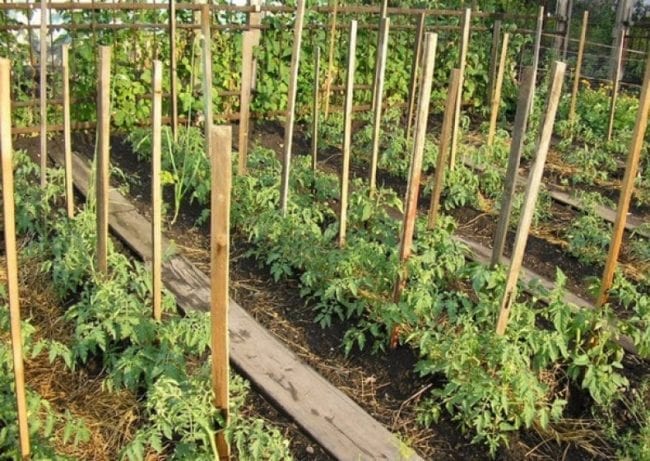

Tomato garter pegs
The method of tying tomatoes to pegs is used by gardeners more often than others, since it is the simplest. Correctly construct a structure using this technology:
- Prepare support pegs (wooden, made of reinforcement, plastic pipes, etc.), 0.5 m longer than the plant itself, 1 for each bush. For tall tomatoes, make stakes 2.5-3 m long.
- Drive in the supports, deepening by 30 cm, placing them at a distance of 10-15 cm from the bush so as not to damage the roots.
- Start tying the stalk of the tomatoes to the stakes with a garter, twisting it with a figure eight. It is correct not to overtighten the shoot, but to wrap and tie it to the support without effort and strong tension.
- As the tomatoes grow, the garter will have to be repeated.

